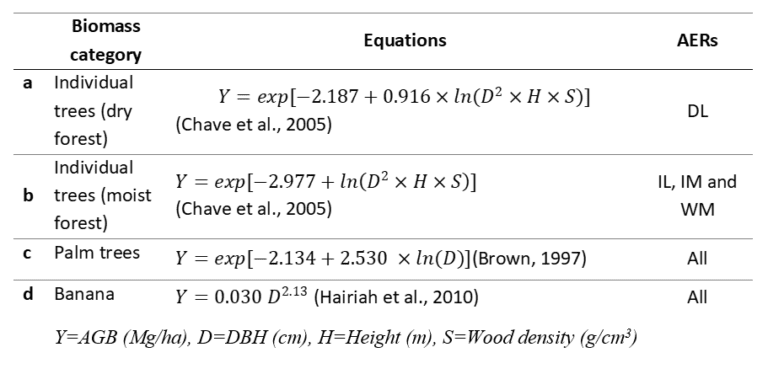Floral data
Floral data
Floral data were gathered by observations of the enumerator with the assistance of a family member. Each homegarden was photographed to obtain further details and the arrangement of the garden. Multiple visits to majority of the homegardens were made to fill data gaps and to verify the collected floral data. All the woody trees found in homegardens that had a DBH>05cm were inventoried
Shannon-Wiener index (SWI)
Richness was determined by recording the total number of woody and non-woody perennial species observed within the homegarden. Abundance, on the other hand, was recorded by counting the number of mature trees present for each species observed. In these calculations, only tree species with diameters at breast height greater than 5 cm were considered, as the homegardens are predominantly tree-based farming systems and the tree component forms the permanent structure of the homegarden. The overall tree diversity, measured in terms of richness and abundance, was used to calculate the Shannon-Wiener index (SWI), which is a compiled diversity index.

where, H=SWI, pi=Proportion of the total sample represented by species, i=proportion of species relative to the total number of species.
Species density, which represents the number of tree species per hectare (Eqn. 2), and tree density, which represents the number of individual trees per hectare (Eqn. 3), were calculated by dividing the total recorded number of species and trees by the extent of the respective homegarden. The area of each homegarden, measured in acres, was recorded as a survey question.

Summed Dominance Ratio (SDR)
The Summed Dominance Ratio (SDR) was calculated using the relative density (RD) and relative frequency (RF) of the woody species in order to identify the most dominant species within a homegarden. The SDR helps in understanding the growth patterns of different plant species and communities. It provides valuable insights into identifying the most valuable and useful species for a specific cluster, region, or area.

Where, SDR = Summed Dominance Ratio, RD = Relative Density (Total number of individuals of a crop/Total number of individuals of all crops) RF = Relative Frequency (Total count of homegardens in which a crop occurred/Sum of counts of all crop occurrences in all homegardens surveyed)
Relative Importance Value (RIV)
Several different methods have been employed in various studies to determine the importance value of species. However, for the present study, the relative importance value (RIV) was calculated, as shown in Eqn. 5, by utilizing the relative frequency (RF) and relative dominance (RD’) of tree species.

Above-ground Biomass (AGB)
The AGB of floral component is a prominent factor to be considered when addressing the resilience of a homegarden. Since there were no allometric equations developed specifically for Sri Lankan homegardens, pantropical allometric equations which have been developed for tropical natural forests (Table 2) were used to calculate AGB. These equations were applied to individual tree and the cumulative value was taken to calculate the total AGB in each homegarden. Different equations were used for different AERs to make them compatible with the original circumstances which were considered in developing the particular equation (Table 2). The AGB was converted to carbon stock with the assumption that carbon accounted for 50% of the total AGB of the system.
Table 2. Equations used to calculate AGB carbon stock

Downloads
Data authority: National Science Foundation, Sri Lanka - Grant No. NTRP/217/CC&ND/TA-04/P-02/01
